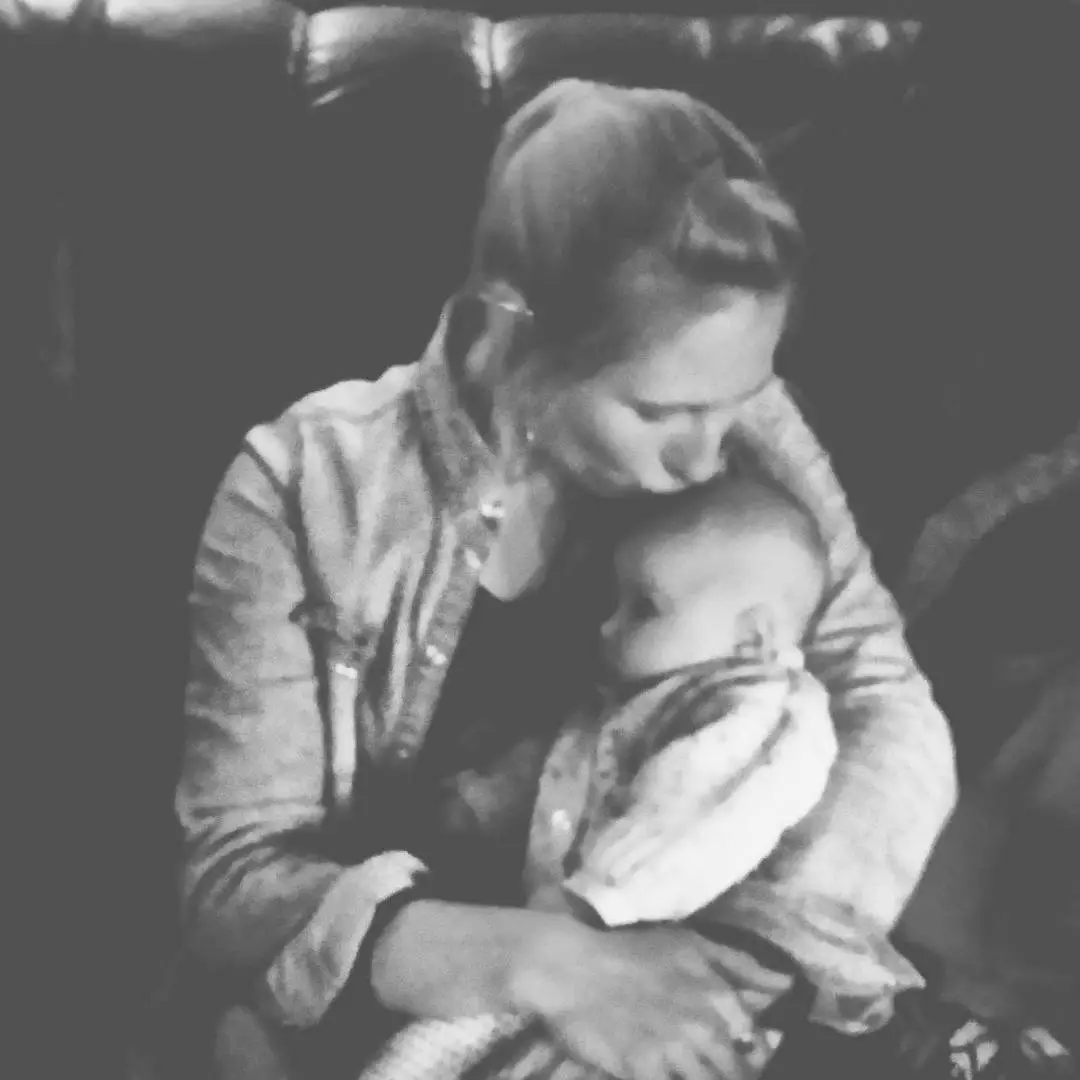Returning to — or beginning — a fitness regimen as a new mom can be challenging, as your time and energy are largely devoted to caring for your baby. In addition, moms who’ve had challenging deliveries or c-sections may be facing limitations on what doctors consider a safe workout.
A stroller workout can be a great middle ground, as it’s time you’re already spending with your baby and involves relatively low-impact cardio that should be safe for almost all postpartum moms. Another great option is a babywearing workout, which brings your baby close for important bonding time while also using them as a resistance object(it’s okay, they’ll never know you’re not just cuddling).
Ready to learn how to make your baby part of your fitness routine?
Mastering the stroller workout
Your walks around the block with your baby definitely burn a few calories, but there’s ways you can change up your pace and movement style to create a productive 30-minute cardio routine which combines time with your infant and health-related self-care.
Lisa Druxman, the designer of the Stroller Strides walking workout, created a program which targets common complaints of new mothers, including back pain and loose stomach skin. There’s never any need to change up your workout, as your baby’s natural increase in size over the months will create greater resistance during the stroll.
You’ll begin to see results if you do this workout at least thrice weekly.
Note: Though this is a relatively low-impact workout, if your doctor has placed limitations on your physical activity after delivery, do not attempt this or any other workout program without medical clearance. Per the American College of Obstetricians and Gynecologists, women who’ve had a healthy pregnancy and normal vaginal delivery should be able to exercise within a few days of birth, or whenever you feel ready.
https://www.acog.org/womens-health/faqs/exercise-after-pregnancy
The warm up
Time: 5 minutes
Instructions: Begin by walking at your normal pace to allow your muscles to warm up. Rotate your joints, rolling your ankles, neck, and shoulders until you feel loose and relaxed.
Be sure to maintain a healthy posture, with your shoulders back and chin up. A common complaint of stroller use is lower back pain, and much of this is caused by poor posture and hunching.
Interval training
Time: 5 minutes
Instructions: Interval training refers to the rapid fire alternation of fast-paced, high intensity activity with equal periods of low-intensity cooldown. (https://www.mayoclinic.org/healthy-lifestyle/fitness/in-depth/interval-training/art-20044588) It may sound a little tough, but in this context, it’s easy to manage and helps to get your heart rate pumping.
To get started, walk at your fastest possible pace for half a minute. Then, slow down to a pace that allows you to breathe normally for another half a minute.
Simply repeat this pattern for a total of five minutes to kick-start your cardio. Note that this shouldn’t feel “easy” — when you’re pushing yourself, you should feel your muscles at work and should be breathing heavily. If you don’t, try to kick up the pace of your high-intensity intervals a bit.
One-armed chest press
Time: 2 minutes
Instructions: At the bottom of a safe incline, stand with the stroller in front of you, grasping the handlebar with one arm. Bring the other arm to your chest, bent.
Use the arm grasping the bar to push away the stroller and pull it back again, mimicking a traditional chest press. After 12 repetitions, switch to the other arm.
Lunges
Time: 3 minutes
Instructions: As you walk with the stroller, lengthen your strides. Bring your torso down toward the ground — the front of your thigh will be nearly parallel, but your knee shouldn’t extend beyond your toes.
Make sure that your chest is lifted, and your back is straight, maintaining good posture. Keep your thigh muscles and glutes taut as you bring yourself back upward.
This exercise should rely on your lower body entirely, and will naturally slow the pace of your walk. This is fine, as this exercise is about toning and strengthening, not speed.
Power walking
Time: 5 minutes
Instructions: Return to walking at a normal pace, making sure to take full strides. Every 60 seconds, pick up the pace just a bit — for the last minute of this interval, you should feel like you’re working hard.
The cool down
Time: 5 minutes
Instructions: Time to let your heart rate come down to normal. Walk at your normal pace, with normal strides, breathing deeply. You’ll know you’re cooling down when you can talk without being out of breath.
Reverse curls
Time: 2 minutes
Instructions: With your stroller on a soft surface, begin by applying the breaks.
Lie flat on your back, head placed toward the stroller’s front wheels. Your hands should reach over your head, each grasping either a wheel or the stroller’s foot rest.
Bend your feet slightly, and your legs at a right angle, while holding your abs taut and tilting your pelvis to complete a curl. Start by doing this a comfortable number of times, but aim to eventually be able to complete three sets of 15 repetitions.
Crunches
Time: 2 minutes
Instructions: Place the soles of your feet on either the stroller’s base or its foot rest, keeping your knees bent at a 45-degree angle. Your hands should be placed behind your head, elbows out, in a traditional crunch/sit-up position.
Lift only your shoulders, neck, and head from the ground, and return to a lying position. Do as many crunches as are comfortable to start out, but like curls, aim to eventually complete three sets of 15 repetitions.
Stretching
Time: 3 minutes
Instructions: There are several stretches you can perform using your stroller as an anchor.
Calf stretches: With your right hand on the stroller’s handle, keep the heel of your left foot on the ground and touch your toe to the left wheel.
To loosen your calf muscles, push your body weight forward into this stretch. Hold the position before switching sides.
Hip/glute stretches: Standing behind the stroller, grasp a handle in each hand. Tilting your pelvis back, cross your right calf over your left thigh, holding the position before changing sides.
Hamstring stretches: With your right hand on the stroller’s handle, put your left heel on top of a wheel and place your left hand on the top of your left leg.
Leaning forward, push your hips back away from the stroller. You will feel your hamstrings stretching; hold the position before switching sides.
Babywearing workouts
If you choose to carry your baby in a worn carrier, such as a soft-structured carrier, sling, wrap, or mei-tai, one fitness option you may enjoy is a babywearing workout. It makes use of the resistance your baby naturally creates during babywearing, and allows you to bond with your child while also getting some healthy exercise.
Note: If you experienced delivery complications, had a c-section, or your baby was premature or has other health concerns, consult with your doctor and your baby’s pediatrician to make sure a babywearing workout is a safe option for you both.
https://www.acog.org/womens-health/faqs/exercise-after-pregnancy
These helpful YouTube videos feature some of our favorite ways to work out while wearing your baby.
Whole body burn workout: Post natal – carifit
This full body, fat-burning workout from CARiFiT targets multiple muscle groups and helps postpartum moms regain core strength after delivery.
Baby wearing workout!
This speedy 10-minute babywearing workout from BARREbeat is perfect for moms who are new to fitness and those who are pressed for time — the only thing you’ll need besides your baby and their carrier are a couple 5-8 lb weights.
Burn 300 calories in 20 minutes babywearing cardio workout
Moms accustomed to cardio who are looking to make the most out of their babywearing workout time will love this quick 20-minute calorie-burning burst workout by Melinda Pedersen.
Our takeaways
Though finding time for fitness can be tough in the weeks and months after baby, moms who wish to prioritize healthy physical activity can multitask by doing stroller workouts and babywearing exercise routines. Both promote bonding with your baby while also encouraging cardiovascular activity that’s good for whole-body health and burns calories.
While these workouts are safe for most mothers, if your doctor has given you restrictions to follow after a complicated delivery or c-section, it’s important to get medical clearance before attempting any workout. Likewise, if your baby was born premature or has any respiratory or chronic health issues, you should consult your pediatrician before babywearing.





